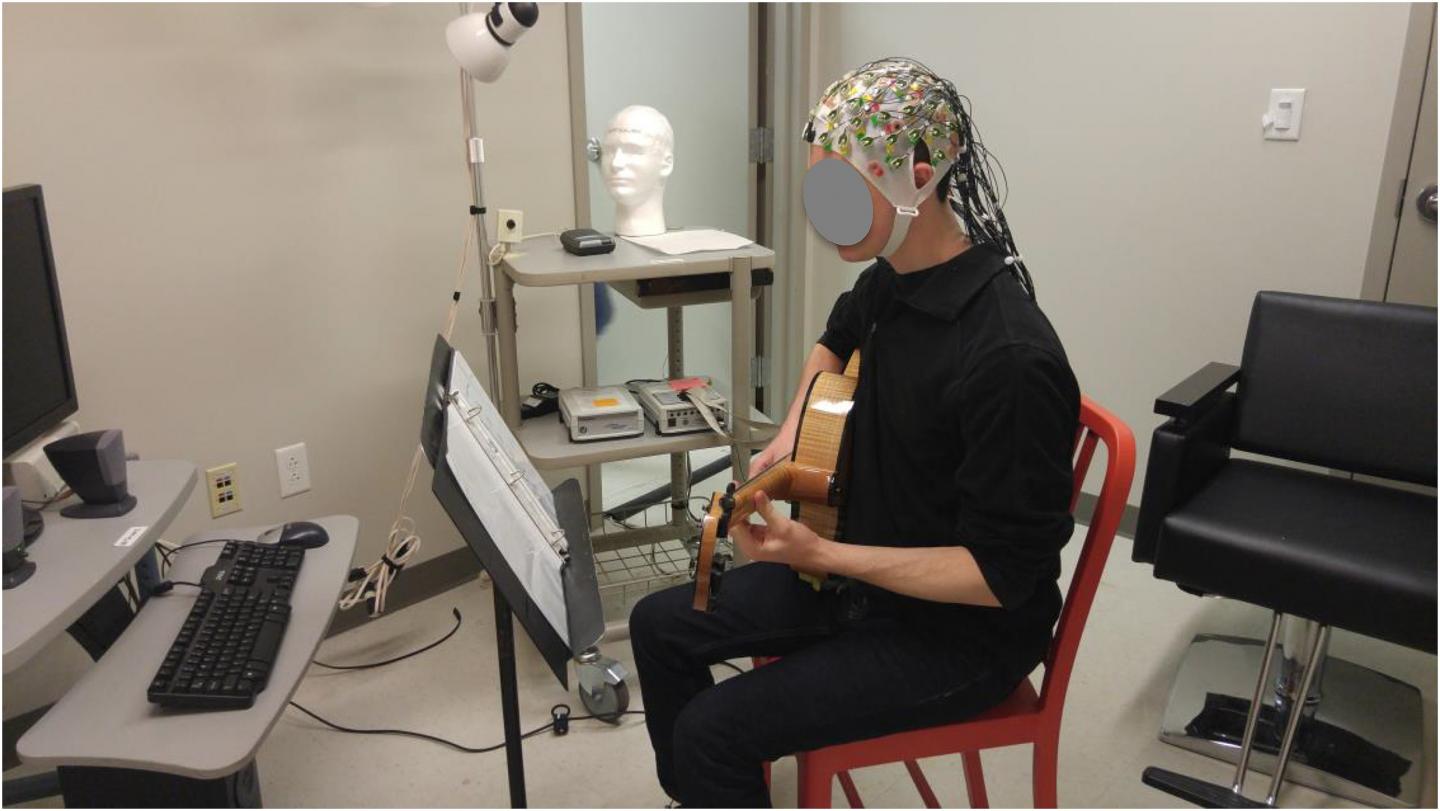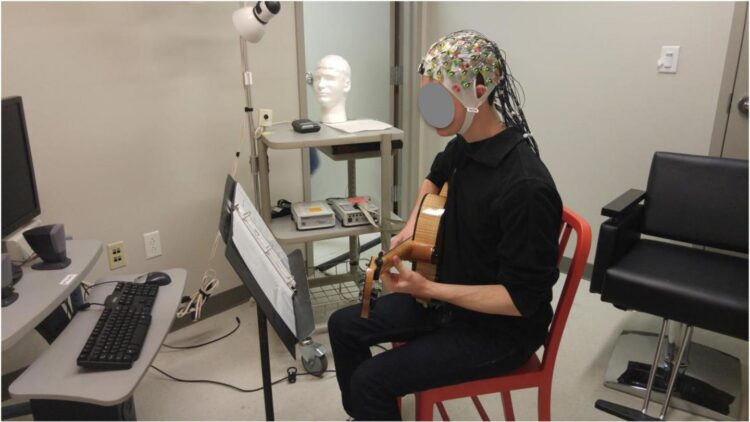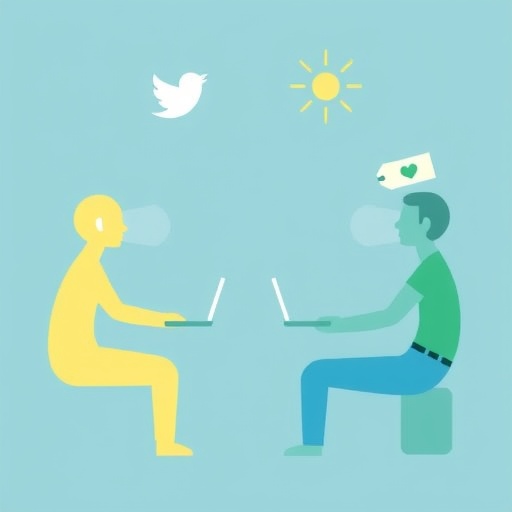A new brain-imaging study out of Drexel University’s Creativity Research Lab sheds light on the controversy of which side of the brain controls creativity by studying the brain activity of jazz guitarists during improvisation.

Credit: Drexel University
According to a popular view, creativity is a product of the brain’s right hemisphere – innovative people are considered “right-brain thinkers” while “left-brain thinkers” are thought to be analytical and logical. Neuroscientists who are skeptical of this idea have argued that there is not enough evidence to support this idea and an ability as complex as human creativity must draw on vast swaths of both hemispheres. A new brain-imaging study out of Drexel University’s Creativity Research Lab sheds light on this controversy by studying the brain activity of jazz guitarists during improvisation.
The study, which was recently published in the journal NeuroImage, showed that creativity is, in fact, driven primarily by the right hemisphere in musicians who are comparatively inexperienced at improvisation. However, musicians who are highly experienced at improvisation rely primarily on their left hemisphere. This suggests that creativity is a “right-brain ability” when a person deals with an unfamiliar situation but that creativity draws on well-learned, left-hemisphere routines when a person is experienced at the task.
By taking into consideration how brain activity changes with experience, this research may contribute to the development of new methods for training people to be creative in their field. For instance, when a person is an expert, his or her performing is produced primarily by relatively unconscious, automatic processes that are difficult for a person to consciously alter, but easy to disrupt in the attempt, as when self-consciousness causes a person to “choke” or falter.
In contrast, novices’ performances tend to be under deliberate, conscious control. Thus, they are better able to make adjustments according to instructions given by a teacher or coach. Recordings of brain activity could reveal the point at which a performer is ready to release some conscious control and rely on unconscious, well-learned routines. Releasing conscious control prematurely may cause the performer to lock-in bad habits or nonoptimal technique.
The study was led by David Rosen, PhD, a recent Drexel doctoral graduate and current co-founder and chief operations officer of Secret Chord Laboratories, a music-technology startup company; and John Kounios, PhD, professor of psychology and director of the doctoral program in applied and cognitive brain sciences in Drexel’s College of Arts and Sciences.
The team recorded high-density electroencephalograms (EEGs) from 32 jazz guitar players, some of whom were highly experienced and others less experienced. Each musician improvised to six jazz lead sheets (songs) with programmed drums, bass and piano accompaniment. The 192 recorded jazz improvisations (six jazz songs by 32 participants) were subsequently played for four expert jazz musicians and teachers individually so they could rate each for creativity and other qualities.
The researchers compared the EEGs recorded during highly rated performances with EEGs recorded during performances that were rated to be less creative. For highly rated performances compared with less-creative performances, there was greater activity in posterior left-hemisphere areas of the brain; for performances with lower ratings compared with those with higher ratings, there was greater activity in frontal and posterior left-hemisphere areas.
By themselves, these results might suggest that highly creative performances are associated with posterior left-hemisphere areas and that less-creative performances are associated with right-hemisphere areas. This pattern is misleading, however, according to the researchers, because it does not take experience of the musician into consideration.
Some of these musicians were highly experienced, having given many public performances over decades. Other musicians were much less experienced, having given only a very small number of public performances. When the researchers reanalyzed the EEGs to statistically control for the level of experience of the performers, a very different pattern of results emerged. Virtually all of the brain-activity differences between highly creative and less-creative performances were found in the right hemisphere, mostly in the frontal region.
This finding is in line with the team’s other research that used electrical stimulation to study how creative expression is generated in musicians’ brains and its study of how experienced and inexperienced jazz musicians reacted to being exhorted to play “even more creatively.”
The new study reveals the brain areas that support creative musical improvisation for highly experienced musicians and their less-experienced counterparts and addresses the controversial question of the roles of the left and right hemispheres in creativity. Furthermore, it raises an important issue that goes to the heart of the definition and understanding of creativity.
“If creativity is defined in terms of the quality of a product, such as a song, invention, poem or painting, then the left hemisphere plays a key role,” said Kounios. “However, if creativity is understood as a person’s ability to deal with novel, unfamiliar situations, as is the case for novice improvisers, then the right hemisphere plays the leading role.”
The study, “Dual-Process Contributions to Creativity in Jazz Improvisations: An SPM-EEG Study” was funded by a grant from the National Science Foundation. It was published in the journal NeuroImage. Co-authors included Yongtaek Oh, doctoral student; Brian Erickson, post-doctoral researcher; Fengqing (Zoe) Zhang, PhD; and Youngmoo Kim, PhD, of Drexel.
Media Contact
Annie Korp
[email protected]
Original Source
https:/
Related Journal Article
http://dx.





